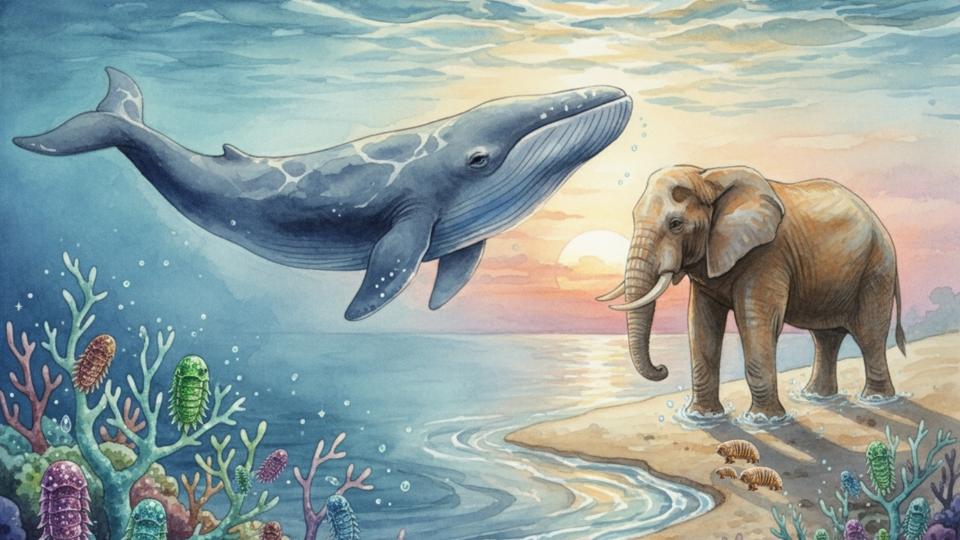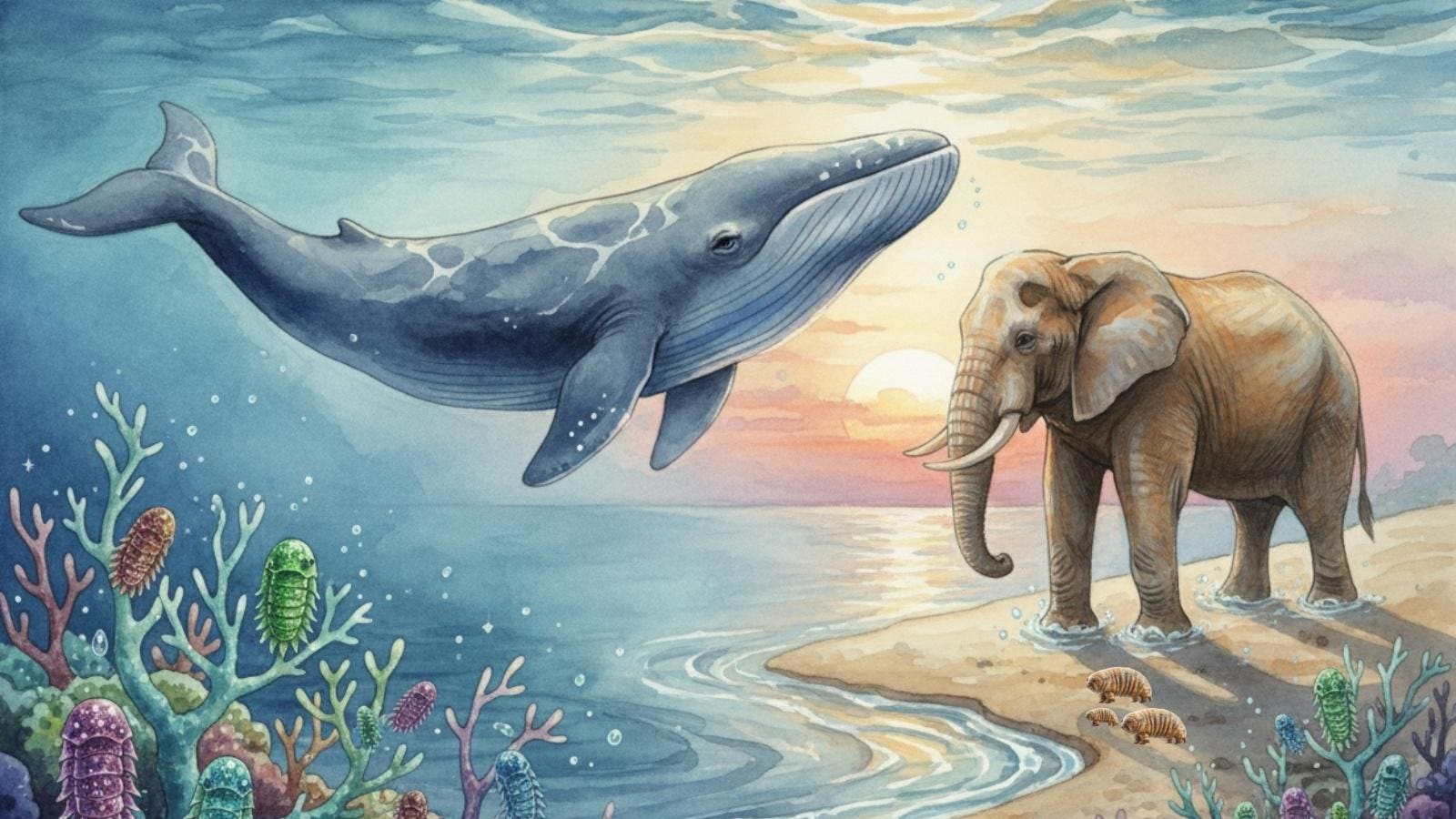
Longevity and disease resistance in humans may soon be transformed by studying and emulating the genetic strategies encoded in nature’s most resilient and long-lived species.
ACCESS Health International
Longevity and disease resistance in humans may soon be transformed by studying and emulating the genetic strategies encoded in nature’s most resilient and long-lived species. As explored in the book Live Longer: What You Can Do, What Medicine Can Do, which I coauthored, current research is unlocking how the Arctic bowhead whale, African elephant and microscopic tardigrade use DNA repair systems and molecular shields to defy the expected limits of lifespan and resist cancer. Now, research is working to adapt these mechanisms for use in mammalian cells. It is also exploring new therapies for aging, cancer and post-surgical recovery.
The Evolutionary Outliers
The evolutionary outliers set the stage for this exploration. Take the bowhead whale, a giant of the Arctic, for example. It claims the crown for mammalian longevity. These whales survive up to 200 years in frigid waters and maintain genome stability despite having billions of cells and a lifespan spanning centuries. The recently profiled Greenland shark also stands out among these outliers, with a lifespan often estimated between 300 and an astonishing 500 years, making it the longest-lived vertebrate known to science. Their stable metabolism, slow growth and resistance to environmental assaults provide a compelling model to decode the biological roots of longevity.
Then there are elephants, with bodies containing vastly more cells than humans. They defy cancer statistics. More specifically, they rarely develop tumors. This phenomenon has perplexed researchers for decades, leading to what is called Peto’s Paradox. It describes how large, long-lived animals such as elephants and whales do not have higher cancer rates than smaller animals, despite having more cells and a greater statistical risk.
The idea is that these species have evolved effective cancer suppression mechanisms, including enhanced DNA repair, a form of programmed cell death that removes damaged cells and cell cycle regulation. The finding challenges previous assumptions about cancer risk and drives research into similar mechanisms in other organisms.
For example, the bacterium Deinococcus radiodurans is often referred to as the most radiation-resistant organism known. The bacterium thrives in environments with intense radiation that would otherwise be lethal to most life forms. This is similar to what is seen in tardigrades.
Tardigrades, the famed microscopic “water bears”, thrive in some of the harshest environments on Earth, surviving extremes of temperature, dehydration and remarkable doses of radiation. Like the tardigrade, D. radiodurans possesses remarkable DNA repair systems that rapidly mend double-stranded breaks (a type of serious damage where both strands of the DNA molecule are broken) and other forms of genetic damage.
The resulting scientific puzzle is this: How do these species, each in their own way, neutralize the cellular havoc caused by free radicals, metabolism and environmental assaults?
The Battle Against Molecular Decay
Central to the investigation is the battle against oxidative stress and the ongoing damage caused by free radicals. These factors form the relentless engine of aging. Our DNA, proteins and cell membranes constantly face challenges, whether from metabolic processes or cosmic radiation. Over time, the resulting damage accumulates, impairing function and triggering cell death. Many age-related diseases emerge from these processes.
Yet, nature’s long-lived superstars show evolved machinery not only to repair such injuries but to stay ahead of them. This suggests that the boundaries of aging are more flexible than once thought. Human biology, therefore, might not be destiny after all. Rather, it could be a rough draft—waiting for expert edits.
With these natural solutions in mind, genome sequencing and CRISPR gene editing now allow researchers to study and apply molecular adaptations from long-lived species. For instance, bowhead whales possess specialized variants of DNA repair genes, such as Cold-Inducible RNA-Binding Protein (CIRBP), that enable efficient repair of radiation and genotoxic damage.
Elephants, on the other hand, owe much of their resistance to cancer to the sheer redundancy of a DNA guardian gene known as TP53; where humans have one working copy, elephants can boast nearly twenty. This means that elephant cells are constantly policing their DNA for even the slightest mutation. The system has proven so effective at cancer prevention that it raises fundamental questions about why humans have not evolved a similar defense.
Medical Applications and Current Frontiers
Current research focuses on introducing these genes into mice and human cell cultures. The bowhead whale gene, when expressed in mammalian cells, speeds DNA repair and reduces mutation rates after exposure to toxins or radiation. Early studies in model organisms have shown increased survival and potential lifespan extension.
Human cells engineered with extra copies of elephant genes eliminate mutated cells before they form tumors. This mirrors the cancer resistance seen in elephants. Tardigrade proteins introduced into human cells give high resistance to radiation-induced damage. These proteins protect DNA and biomolecules, expanding the known range of cellular protection.
Many next-generation approaches emphasize targeting bone marrow stem cells specifically for genetic enhancement, with the idea that ‘upgrading’ these master cells will support healthier aging at the cellular and tissue level across the body. This approach leverages the well-known regenerative function of blood and bone marrow stem cells, which are central both to immune defense and tissue repair. It’s theorized that equipping bone marrow stem cells with these protective genes could ‘reset’ their youthful resilience, reduce mutation loads after stress and potentially extend lifespan.
The Business of Longevity
Across the globe, the anti-aging and regenerative medicine sector has expanded into a multi-billion-dollar industry as investors target startups focused on gene-edited organs, animal-to-human transplants and pharmaceuticals aimed at extending lifespan and improving healthspan.
The immediate applications of this science lie in medicine’s toughest areas. In oncology, it could mean creating cancer-fighting immune cells or blood stem cells that resist chemotherapy and radiation. These advances may enable more aggressive treatments with fewer adverse side effects.
For aging and degenerative disorders, gene-modified stem cells could help maintain or restore organ and tissue health in old age. Transplant medicine may also benefit. Animal-to-human or genetically modified organ transplants could gain better resistance to cellular stress after surgery.
Longevity Blueprint from Nature’s Best Survivors
The blueprint for radical medical breakthroughs increasingly looks less like a black box and more like a catalog of evolutionary lessons from nature’s own champions of endurance. Bowhead whales, elephants and tardigrades are showing scientists how to enhance the biology of humans and other mammals, gene by gene and molecule by molecule.
The far-reaching implications extend beyond human health and longevity to cancer therapy, organ transplantation and even the ethical boundaries of what science should pursue. While the promise is vast, so too is the necessity for responsible, transparent development as well as clear-eyed debate over how and why, we should borrow nature’s tricks for ourselves.
If nature’s greatest survivors have taught us anything, it is that solutions to the most profound challenges often lie in unexpected places—sometimes at the bottom of the ocean, sometimes in the African savannah and sometimes in a puddle teeming with tardigrades.

